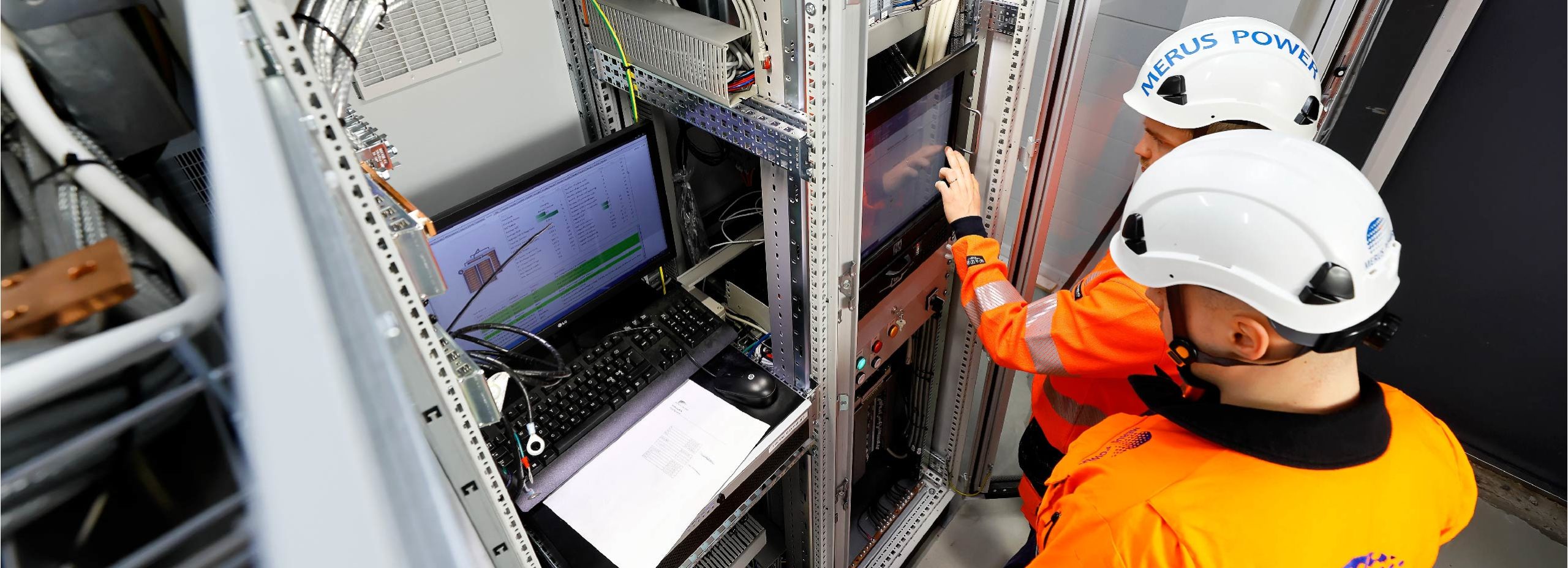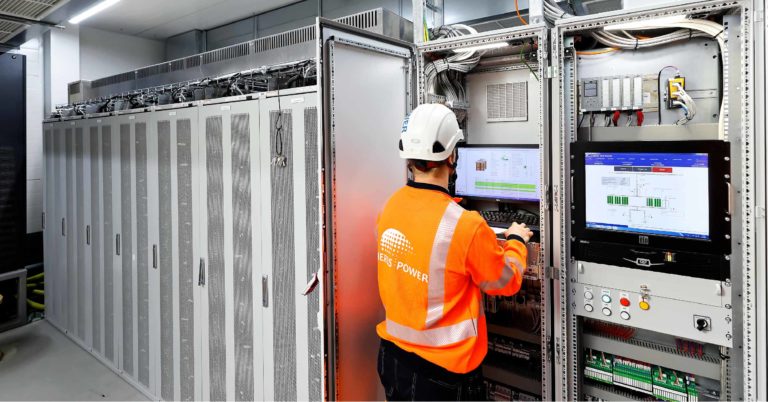
Finland’s LEMENE project shows the ropes for founders of energy communities
The Marjamäki industrial area in Lempäälä, Finland is a bustling and fast-growing commercial and logistics hub. Its most famous building is the 104 000 m2 Ideapark Lempäälä shopping mall. Over the past five years, this area has also become a test bed for a new kind of sustainable energy production: companies coming to the Marjamäki industrial estate will join a decentralized energy system that will allow them to share energy with each other.
The brand-new approach to this energy solution is based on recent legislative changes that allow for the creation of ‘energy communities’. The aim of the Lempäälä Energy Community, or LEMENE project, is to ensure the security of supply in the region and to support local renewable energy production. The scale of the project is impressive even from a schematic view. Lempäälän Energia is the company behind this project and its implementation. Former Managing Director, Jarno Lintunen, is happy to present the solution.
“LEMENE is one of the Ministry of Economic Affairs and Employment’s 2017 flagship projects for new energy technology. The project is unique in Finland. You would have to travel a long way to find a project of this size.”
LEMENE gets its energy from many sources. Currently, 13 000 solar panels, six gas engines and, for the first time, new-generation solid oxide fuel cells (SOFC) are connected to the grid. Together, these are capable of generating just over 12 MW of power.
“This is a ring network of six substations controlled by a microgrid system. The intelligent system is able to predict and optimize production according to consumption. If necessary, it can operate as a fully autonomous island, disconnected from the national grid. We also participate in the Finnish Transmission System Operator’s (Fingrid) Frequency Reserve market,” says Mikko Kettunen, former Chief Business Development Officer of Lempäälän Lämpö. (Mikko Kettunen is the current Managing Director of Lempäälän Energia.)
Lempäälä’s energy system also includes a 30 MWh water-based thermal energy storage and a 4 MW battery energy storage system supplied by Merus Power.
“The Merus® battery energy storage is a very central part of our microgrid. It allows us to form a self-contained island, so that we are self-sufficient 24/7, even if there are problems with the national grid. On the other hand, the battery energy storage balances the highly variable renewable energy production. It also allows participation in the Frequency Reserve market. We participate in Fingrid’s reserve market on several marketplaces,” says Jarno Lintunen.
The battery energy storage system also plays an important role in the so-called black start of the microgrid. In the event of an external power outage, the energy storage ensures that the grid voltage is at its nominal value when other generations get connected to the grid.

Merus® ESS – Energy storage system
Merus® Energy Storage System is a scalable lithium-ion battery energy storage system fully designed by Merus Power.
Profitable and flexible renewable energy
Participation in the fast frequency reserve market offers the best revenue for those investing in renewable energy projects right now. The structure and software of the energy storage are also crucial factors in this application.
“The battery energy storage system enables the optimization of the total investment return. This optimization starts at the sales stage. This is when the smartest possible solution is designed according to the investor’s financial objectives and other needs. Already at that stage, we are able to precisely analyze what kind of energy storage is needed to meet the various needs of the customer,” says Markus Ovaskainen, Sales Director at Merus Power.
“After all, a battery alone does not really do anything. You need technology and software around it, that Merus Power also provides to implement the investor’s business plans,” Ovaskainen continues. LEMENE is a good example of how business cases of sustainable and renewable energy solutions are changing very quickly.
“When this battery energy storage was delivered, there was no Fast Frequency Reserve (FFR) market yet. We made the necessary software changes and tests in our own factory when the need arose. Then we simply upgraded the software and did the market approval tests required by Fingrid,” says Aki Tiira, Merus Power’s former Aftersales and Service Director. (Aki Tiira is currently a Sales Manager at Merus Power.)
A successful partnership and pilot project
LEMENE’s representatives are satisfied with their battery energy storage system and Merus Power’s fast response as well as professionalism.
“The collaboration has gone very well with Merus Power. They’ve taken good care of things whenever there was something that needed to be done. Help and support have been provided, and the system has been updated if needed,” comments Lintunen.
Both Jarno Lintunen and Mikko Kettunen are also very pleased with the results of the whole project. The number of geographically dispersed regional energy communities will increase significantly in Finland once the remaining constraints on electricity distribution are overcome. Presently, the legislation does not allow the free distribution of electricity outside a group of properties. Electricity must be sold to the public grid, where it is bought by different operators at market prices. However, legislation and markets are evolving rapidly. In the meantime, the Marjamäki industrial area welcomes new entrepreneurs to the region. There already are ready-made premises available, and new ones are being built continuously.


In Finnish
LEMENE-hanke näyttää suuntaa energiayhteisöjen perustajille
Marjamäen teollisuusalue Lempäälässä on vilkas ja voimakkaasti kasvava kaupan ja logistiikan kehto. Sen tunnetuin rakennus on 104 000 kerrosneliömetrin laajuinen Ideapark. Marjamäestä on viiden viime vuoden aikana tullut myös uudenlaisen, kestävän energiatuotannon koekenttä: Marjamäen teollisuusalueelle tulevat yritykset liittyvät hajautettuun energiajärjestelmään, jonka avulla ne voivat jakaa energiaa keskenään.
Marjamäen energiaratkaisun upouusi toimintamalli perustuu hiljattain voimaan tulleisiin lakimuutoksiin, jotka sallivat ns. energiayhteisöjen perustamisen. Lempäälän energiayhteisön eli LEMENE-hankkeen tavoitteena on alueen huoltovarmuuden takaaminen ja paikallisen uusiutuvan energian tuotannon tukeminen. Hankkeen laajuus tekee vaikutuksen jo kaavakuvasta katsottuna. Toteutuksesta vastaavan Lempäälän Energian entinen toimitusjohtaja Jarno Lintunen esitteleekin ratkaisua mielellään.
“LEMENE on yksi Työ- ja elinkeinoministeriön vuoden 2017 uuden energiateknologian kärkihankkeista. Projekti on ainutlaatuinen Suomessa. Aika kauas saa matkusta ennen kuin löytää tämän kokoluokan hankkeen.”
LEMENE saa energiansa monesta lähteestä. Verkkoon on yhdistetty tällä hetkellä 13 000 aurinkopaneelia, kuusi kaasukonetta ja ensimmäistä kertaa tuotantokäytössä olevia uuden sukupolven kiinteäoksidipolttokennoja. Nämä kykenevät yhdessä tuottamaan hiukan yli 12 MW:n tehon.
“Tämä on kuuden sähköaseman muodostama rengasverkko, jota ohjaa mikroverkkojärjestelmä. Älykäs järjestelmä pystyy ennustamaan tuotantoa ja optimoimaan sitä kulutuksen mukaan. Tarvittaessa se pystyy toimimaan täysin itsenäisenä saarekkeena, irti valtakunnan verkosta. Lisäksi me osallistumme Fingridin taajuudensäätömarkkinalle,” Lempäälän Lämmön entinen kehitysjohtaja Mikko Kettunen kehaisee. (Mikko Kettunen on Lempäälän Energian nykyinen toimitusjohtaja.)
LEMENEn energiajärjestelmään kuuluvat myös 30 MWh:n veteen perustuva lämpöakku ja Merus Powerin toimittama 4MW:n sähkövarasto.
“Sähkövarasto on hyvin keskeinen osa mikroverkkoa. Sähkövaraston avulla voidaan muodostaa itsenäinen saareke, jolloin me olemme omavaraisia 24/7, vaikka valtakunnan verkossa olisi ongelmia. Toisaalta sähkövarasto tasoittaa voimakkaasti vaihtelevan uusituvan energian tuotantoa. Lisäksi se mahdollistaa osallistuminen reservimarkkinalle. Me olemmekin mukana Fingridin reservimarkkinalla useammalla markkinapaikalla,” kertoo Lintunen.
Sähkövarastolla on tärkeä rooli myös mikroverkon ns. pimeäkäynnistyksessä, ulkopuolisen sähkökatkon sattuessa. Sähkövarasto varmistaa pimeäkäynnistystilanteessa, että verkon jännite on nimellisarvossaan, kun verkkoon aletaan kytkeä muuta tuotantoa.
Uusiutuvaa energiaa kannattavasti ja joustavasti
Kantayhtiön nopean reservin markkinaan osallistuminen tarjoaa juuri nyt parhaat tuotot uusituvan energian hankkeisiin investoiville. Sähkövaraston rakenne ja ohjelmisto nousevat ratkaiseviksi tekijöiksi tässäkin sovelluksessa.
“Sähkövarasto mahdollistaa kokonaistuoton optimoinnin. Tämä optimointi alkaa meillä myyntivaiheessa. Silloin suunnitellaan mahdollisimman fiksu ratkaisu investoijan taloudellisten ja muiden tavoitteiden mukaan. Me pystymme jo siinä vaiheessa tarkasti analysoimaan, millainen sähkövarasto tarvitaan, jotta tavoitteet täyttyvät,” Merus Powerin myyntijohtaja Markus Ovaskainen toteaa.
“Pelkkä akkuhan ei tee varsinaisesti mitään. Sen ympärille tarvitaan meidän tuottamaa teknologiaa ja ohjelmistoa, jotka toteuttavat sijoittajan bisneskeissit,” Ovaskainen jatkaa.
LEMENE on hyvä esimerkki siitä, että erityisesti kestävän ja uusituvan energian ratkaisuissa Ovaskaisen painottamat bisneskeissit muuttuvat erittäin nopeasti.
“Silloin, kun tämä sähkövarasto toimitettiin, ei ollut vielä tällaista nopean taajuusreservin eli FFR-markkinaa. Me teimme tarvittavat softamuutokset ja testaukset omalla tehtaalla, kun tarve ilmeni. Sitten kävimme päivittämässä softat tänne ja teimme Fingridin vaatimat markkinahyväksyntätestaukset,” Merus Powerin jälkimarkkinoinnista vastaava Aki Tiira kertoo. (Aki Tiira on siirtynyt myyntitehtäviin Merus Powerilla.)
Onnistunut hanke
LEMENEn edustajat ovat tyytyväisiä sähkövarastoonsa ja Merus Powerin nopeaan reagointikykyyn ja ammattimaiseen toimintaan
“Merus Powerin kanssa on mennyt todella hyvin. He ovat ottaneet hyvin koppia aina, kun on ollut ajatus, että jotain tarvitsee tehdä. Apua ja tukea on saatu, ja järjestelmää on päivitetty tarpeen mukaan,” Lintunen kommentoi.
Sekä Jarno Lintunen että Mikko Kettunen ovat erittäin tyytyväisiä myös koko hankkeen tuloksiin. Maantieteellisesti hajautettujen alueellisten energiayhteisöjen määrä tulee lisääntymään huomattavasti Suomessa, kun sähkönjakeluun vielä liittyvät rajoitteet saadaan purettua. Tällä hetkellä lainsäädäntö ei mahdollista vapaata sähkönjakelua kiinteistöryhmän ulkopuolella, vaan sähkö on myytävä yleiseen verkkoon, josta eri toimijat ostavat sen markkinahinnalla. Lainsäädäntö ja markkinat kehittyvät kuitenkin nopeasti. Sitä odotellessa Marjamäki toivottaa uudet yrittäjät tervetulleiksi alueelle. Marjamäessä on jo tarjolla valmiita toimitiloja, ja uusia rakennetaan jatkuvasti.
